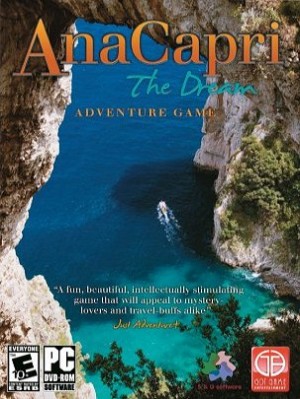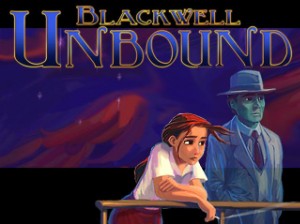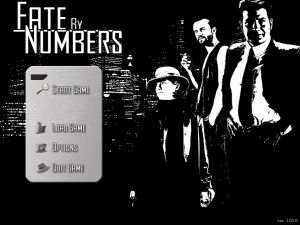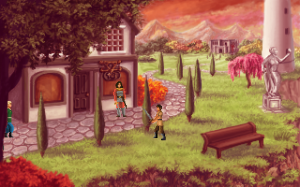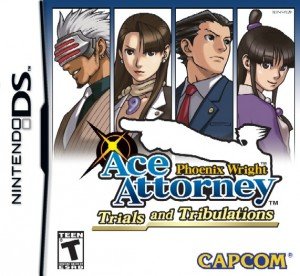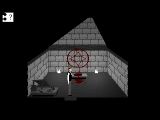Review for CSI: Unsolved!
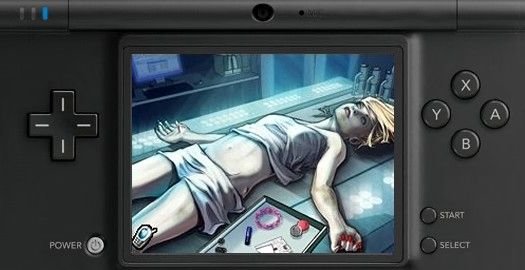
Following forensic detectives who research crime scenes, trying to find that tiny piece of evidence that will lead to the conviction of a criminal that would otherwise escape justice, is one of the main attractions of the TV series CSI. The games – theoretically – go one step better, giving you the chance to actually play as one of those detectives. Unfortunately, much like its predecessors, the simplicity and repetitiveness of the tasks required make CSI: Unsolved! on the Nintendo DS not quite as interesting as you might think if you are a regular viewer of the show.
As with CSI: Deadly Intent - The Hidden Cases, Unsolved is a DS exclusive, this time offering five criminal cases. As a newly transferred agent to the night shift, you get to investigate alongside the stars from the Las Vegas branch like Sarah Sidle, Ray Langston, Nick Stokes and Greg Sanders. At the CSI headquarters, you'll also meet and interact with David Hodges, Wendy Simms, Archie Johnson, Dr Robbins, and of course Jim Brass and Catherine Willows. If you've ever watched the TV series, you'll easily recognize all the characters as their representations are clearly depicted. Thankfully, resolving my complaint about the constantly grumpy looking characters in the last game, they all look much friendlier and more personable here. You can even expect Hodges to make a couple of bad jokes and sarcastic remarks.
The graphics have a nice, cartoony look that do a good job of setting the atmosphere in each crime scene. Whether it's a barren desert where the mummified remains of an unknown victim are found or the stage of a TV show, the backgrounds are all detailed and believable. One of my main criticisms of Deadly Intent was that there was so little to examine. This time around, the developers have added a few more descriptions for items that aren't of any relevance, which makes the various crime scenes a bit more interesting and diverse, though they haven’t done much with the opportunity. Touching a teddy bear results merely in a 'That's a nice teddy bear, but it has nothing to do with our current investigation.' You'll get a flashing arrow to indicate that you've found all the relevant clues in that area, so you'll always know when there's more to be done. The cutscenes are not really animated, instead presented more like slideshows, which is a bit of a disappointment, especially since the hyper-realistic “moment of death” scenes the TV show is famous for are practically non-existent, and the few acts of violence shown are very mild.
The first investigation deals with a pop star who dies in her dressing room, her body full of scorpion poison. Did she get stung by one of the scorpions used during her stage act, or was the poison introduced by some other method? When mummified remains are found in the desert not far from Vegas, the CSI team are puzzled by a cause of death from drowning when there is no water anywhere near. Later, a beautiful young nurse in a posh nursing home is found dead in a broom closet after one of the rich, terminally ill clients had recently made her the sole heiress in his will. Elsewhere, a group of CSI role players like to enact crime scenes and the ensuing research, until one of them is killed for real. The last case is about a reality show featuring physical health and extreme endurance tests, where one of the two finalists dies live on camera. Contrary to previous CSI games, there is no link between the cases, but the stories are much more interesting and less predictable than in the previous DS adventure, and victims and suspects alike are portrayed with enough background information to give the cases a bit of depth.
Gameplay in Unsolved follows the usual formulaic pattern. You'll always visit the crime scene first, using the stylus to sweep across the background in search of interesting clues. Usually the location is wider (and occasionally higher) than the current screen, and when you move the stylus the background scrolls with a bit of parallax effect. The cursor changes colour when you find something that you can look at. Most of the time you simply get a description and the item goes into your inventory (which you cannot access at will), but occasionally you need to select the right tool with which to pick up the item. It's typically not hard to figure out, as the description gives you a big hint about whether it's a fluid you might collect with a cotton bud, a stain that might be revealed as blood with Luminol or a smudge that could be a fingerprint, which you can expose by applying powder and blowing away the excess. In a couple of instances, you'll need to wiggle free the item with your tweezers or get the focus of your camera just right to take a picture, but most of the time simply choosing the tool is enough to collect the evidence. This works very well and is easy to understand.
Once you've investigated the crime scene, it's time to return to the CSI headquarters. This is often done automatically, but sometimes you'll need to select the location on a map. All your collected evidence and the body are transferred here on their own. At headquarters, three locations are available: the morgue, where you can ask Dr Robbins about the cause of death and inspect the body, the lab where the evidence you've gathered is analyzed, and Jim Brass's office. Once you've found a solid lead, you can ask Brass to call a suspect or witness in for interrogation. But first you'll need to go to the lab and use the available machines to look at what you've found in greater detail.
Analysis of the evidence is done with a series of puzzles (ranging from jigsaws for the reconstruction of shredded documents to building an electrical circuit to hack into an email account) and minigames (such as constructing a molecule from its components or a Match-3 game to find out what is in a chemical substance) and a few that are somewhere in between a puzzle and a minigame. Some of them, like matching fingerprints by choosing unique points of reference until there is only one possible person, or identifying chemicals by fitting clusters of atoms onto a grid, are re-used from Deadly Intent. Most tasks are not very realistic, or even consistent, as two molecules of cocaine that are used to prove they are from the same batch look nothing alike, and even two samples of DNA from the same person look very different from each other, but the tasks are easy to understand and mostly fun to do, at least the first couple of times. Unfortunately, they are repeated over and over again, and although there is more variation here than in the previous game, and they do get gradually more difficult to give you a bit of challenge, they still get old rather quickly.
Interviews are a matter of Brass asking the questions and you paying attention to what the suspect says. At the bottom of the screen, your inventory is displayed with the results of the analyses you’ve just done. If anything contradicts what the suspect says, you have to present the appropriate evidence, but occasionally you'll have to select the option admitting you don't have anything to disprove their statement. If you do well, one or more optional cutscenes are unlocked, showing details of the witness statement from their point of view. If you make a mistake, either by providing incorrect evidence or failing to produce evidence at all, Brass will gently tell you off and continue with the interview without the related cutscene being shown. However, make three mistakes and the interview starts over from the beginning. You will also get fewer points at the end of the chapter when Catherine Willows reviews your performance. You can read up on the characters in each case at any time except during interviews, but you do get the chance to say you aren't ready for an interview if you would like to check the person's profile first. This feature is very useful if you're picking up a case again after a break.
An interview usually leads to new locations, or in some cases a repeat visit to a previous location to gather additional clues. After a few rounds of collecting, analyzing and interviewing, the criminal’s identity is generally quite obvious, although there are a few unexpected twists. Each case lasts about an hour and ends in a performance ranking. It's not hard to get top ratings, but if you aren't happy with the result you can always replay a chapter from the main menu. The game saves automatically at regular intervals (usually at the end of an interview or minigame) and you can't save manually, but you'll never lose much progress if you switch off the handheld in the middle of a case.
With a whole extra case, better written stories and somewhat more varied analysis tasks than the last game, CSI: Unsolved! is certainly a step in the right direction, but the repetitiveness of the activities means it still isn’t a great game. The minigames and puzzles are fun enough when you encounter them the first few times, but you’ll probably be bored of them before you’re done. Perhaps a little tedium is reality in the life of a true CSI, but when it comes to the latest Nintendo DS adventure, being a forensic detective still isn't nearly as interesting and exciting as the TV shows portray.


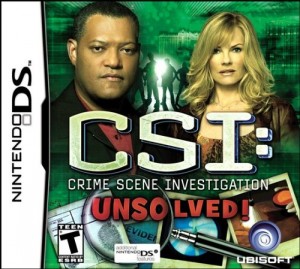
_capsule_fog__medium.png)




